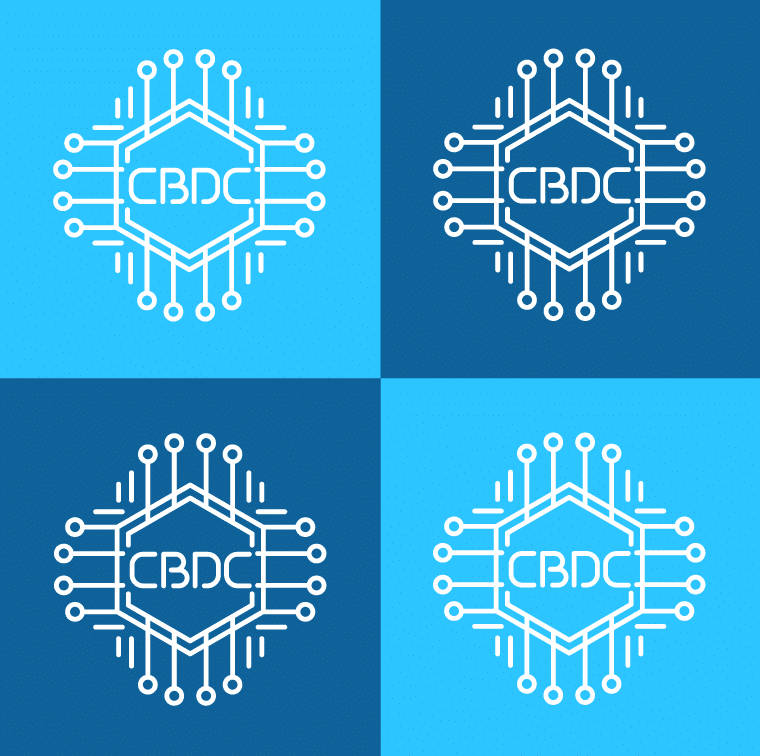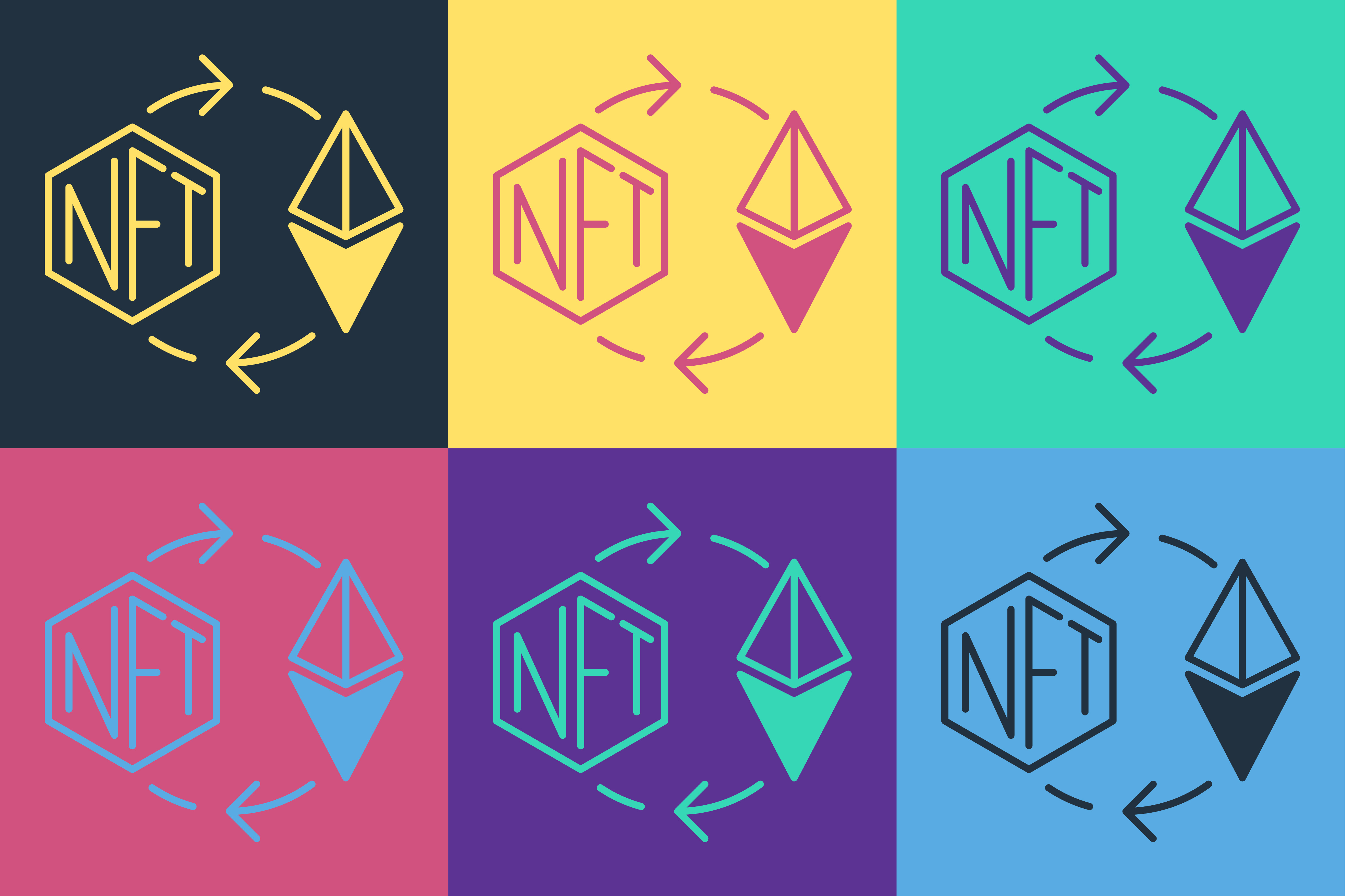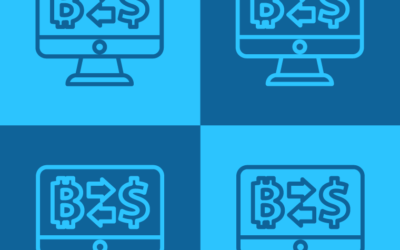What is a Central Bank Digital Currency: Your Guide to CBDCs
In this article, we’ll take a deep dive into what a central bank digital currency is, how it works, and the advantages and disadvantages of CBDCs. We’ll also look at how Central Bank Digital Currencies compare to cryptocurrencies and which countries are currently using/developing CBDCs. By the end of this article, you’ll know exactly what a CBDC is and how it works.
Ready? Let’s go!

What does CBDC stand for?
CBDC stands for Central Bank Digital Currency.
What is a Central Bank Digital Currency, exactly?
A Central Bank Digital Currency (CBDC) is a digital version of traditional paper money.
Like traditional cash, CBDCs can be used to complete transactions and can even be exchanged for other currencies. However, instead of physical notes and coins, they exist as digital files stored in a digital wallet.
Like traditional money, Central Bank Digital Currencies are also issued and backed by a central bank.
What is the point of central bank digital currency?
The point of a Central Bank Digital Currency is to create a more secure and efficient way of conducting transactions. CBDCs are also intended to offer an alternative to traditional cash.
By digitizing currency, CBDCs can provide many potential benefits for individuals and the economy. You’ll find more on this below.
How is a CBDC different from cash?
A Central Bank Digital Currency is different from cash in several ways. Here are four important differences between CBDCs and cash.
- A CBDC is a digital currency, whereas cash is a physical currency.
- Transactions made with a CBDC can be almost instantaneous, whereas transactions made with cash can take longer.
- CBDCs can be used for online transactions and cross-border payments. On the other hand, cash is used primarily for physical transactions and is not easily transferable across borders.
- CBDCs are often more secure than cash. That’s because digital wallets can be protected with strong encryption and multi-factor authentication. In contrast, cash can be easily lost or stolen.
Types of CBDCs
There are two types of CBDCs – retail and wholesale.
- Retail CBDCs are meant for use by the general public. They are intended to be used for everyday transactions, similar to cash.
- Wholesale CBDCs are meant to be used by financial institutions and businesses for large-value transactions.
How do CBDCs work?
Central Bank Digital Currencies work in a similar way to traditional cash. However, as mentioned above, rather than a physical form of money, a CBDC is digital.
When someone wants to make a transaction using a CBDC, they can use their digital wallet to transfer the funds to the recipient’s digital wallet. This transfer is done through a process called “digital issuance.”
A network of computers typically verifies a CBDC transaction. This network ensures that the user has sufficient funds and that the transaction is valid. If you’re familiar with cryptocurrency and blockchain technology, you may recognize this type of network as a distributed ledger.
Now that we’ve discussed what is a Central Bank Digital Currency and how it works, let’s look at the advantages and disadvantages of CBDCs.
CBDC Advantages and Disadvantages – An Overview
Below is an overview of the possible advantages and disadvantages of Central Bank Digital Currencies.
| CBDC Advantages | CBDC Disadvantages |
| More efficient and secure payments. | Risk of cyberattacks. |
| Increased financial inclusion. | Need for complex infrastructure and technology. |
| Improved security (in many cases). | Less privacy and the possibility of complete control by central banks. |
| More efficient and effective monetary policy. | |
| Improved cross-border payments. | |
| Increased regulation (e.g., prevention of financial fraud). |
Continue reading to learn more about these advantages and disadvantages.
CBDC Benefits
Central Bank Digital Currencies offer many potential advantages over traditional cash and other forms of currency. The benefits of CBDCs include the following.
- Increased speed and efficiency of transactions. With a CBDC, payments can be made almost instantly – without waiting for checks to clear or for cash to be physically transported. This can reduce cash handling costs and increase the speed of commerce.
- Improved financial inclusion. CBDCs can provide an alternative to traditional banking systems, making it easier for unbanked (or underbanked) people to access financial services. This can be particularly beneficial for people in developing countries, where access to traditional banking systems is limited.
- Security. Digital wallets can be protected with strong encryption and multi-factor authentication, making it more difficult for thieves to steal or tamper with funds.
- Efficient and effective monetary policy. Central banks can use CBDCs to improve their operations’ efficiency and make monetary policy more effective. For example, CBDCs can enhance the efficiency of financial operations by providing a digital alternative to cash. This would allow central banks to more easily implement monetary policy by adjusting the supply of CBDCs in circulation. CBDCs can also help central banks achieve monetary policy goals by providing a new tool for policy implementation. For instance, CBDCs would allow central banks to implement negative interest rates (without the risk of causing a bank run) and other unconventional monetary policy measures.
- Improved cross-border payments and transactions. Central Bank Digital Currencies would make it easier for people and businesses to conduct international transactions.
- Increased regulation. Since CBDCs are issued and controlled by a central bank, they can be regulated. As a result, central banks can monitor and control the supply of CBDCs in circulation. This can help to prevent money laundering and other financial crimes. The ability to regulate CBDCs is an advantage in some cases. However, regulation may also be a disadvantage. You’ll find more on this concept below.
Now that you’ve seen the benefits of Central Bank Digital Currencies, you might wonder, “What are the disadvantages of CBDC?” Let’s take a look.
CBDC Disadvantages
Like any technology, Central Bank Digital Currencies have disadvantages that should be considered. Here are some of the most significant disadvantages of CBDCs.
- Risk of cyberattacks. Digital currencies are stored in digital wallets and, therefore, vulnerable to hacking and other cyber threats. If a digital wallet is hacked, the hacker could steal the funds held in the wallet.
- Complex infrastructure and technology. Setting up a system for issuing, distributing, and managing CBDCs can be a complicated and costly process.
- Increased regulation and control. Because central banks issue CBDCs, they have complete control over the use and supply of this digital money. While this is great for preventing financial fraud, it can also be a disadvantage for everyday consumers. For example, by using Central Bank Digital Currency, central banks could monitor your spending (e.g., when and where you spend your money) and even control how you spend it. While this level of control is not guaranteed, it is a possibility.
Keep in mind that central banks can design their CBDCs differently. Therefore, depending on the technology and design, potential disadvantages will vary. Thus, it is essential for central banks to carefully consider the impacts of these disadvantages before implementing digital currencies.
Ok, so you know what is a Central Bank Digital Currency and how it works. But how do CBDCs compare to cryptocurrency? Let’s take a closer look at CBDC vs cryptocurrency.
What is the difference between Central Bank Digital Currency and cryptocurrency?
Central Bank Digital Currency and cryptocurrency are both digital forms of money. However, they have some fundamental differences.
Here are three critical differences between CBDCs vs cryptocurrency.
- CBDCs are controlled and issued by a central bank, making them similar to traditional fiat currency. On the other hand, cryptocurrencies, such as Bitcoin and Ethereum, are decentralized and not backed by a central authority.
- Central Bank Digital Currencies are intended for use by the general public for everyday transactions. While some cryptos are also designed as a medium of exchange, others are not. For instance, some cryptocurrencies are used as a store of value, etc.
- CBDCs are based on permissioned ledger technology. On the other hand, many cryptocurrencies are based on permissionless ledger technology. As a result, with CBDCs, only authorized parties can participate in the network. However, in the case of cryptocurrencies, anyone can join the network and help validate transactions.
Is CBDC based on blockchain?
A CBDC can be based on blockchain technology, but it doesn’t have to be. In other words, blockchain technology is not the only option for implementing CBDCs.
-> What is blockchain technology? Learn more here – Blockchain
Central banks can implement CBDCs using blockchain, other types of distributed ledger technologies, and even traditional centralized systems. With so many options, central banks have the flexibility to choose the technology that best suits their needs and goals.
Keep in mind there are also various types of blockchains. For example, some blockchains are permissionless, while others are permissioned. Therefore, depending on the use case and the central bank’s goals, a CBDC that uses a permissioned blockchain may be more appropriate than a permissionless blockchain.
Congratulations, if you’ve made it this far, you know more about Central Bank Digital Currency than most people! With your newfound knowledge of what is a Central Bank Digital Currency, you might be wondering – do any CBDCs currently exist?
Do central bank digital currencies exist?
So, how many central banks have digital currencies, and which countries have launched a CBDC?
Central Bank Digital Currencies are still in the early stages of development and experimentation. However, they do exist. In fact, several central banks around the world are currently researching and experimenting with CBDCs.
Here’s a list of the central banks currently experimenting with CBDCs.
Central Banks and Countries with CBDCs
- People’s Bank of China – digital Yuan (aka digital renminbi or digital RMB)
- Central Bank of the Bahamas – Sand Dollar (a digital version of the Bahamian dollar)
- European Central Bank – Digital Euro
- Monetary Authority of Singapore – wholesale CBDC
- Central Bank of Canada
- Riksbank (Sweden) – e-krona
- Central Bank of Nigeria – eNaira
- Swiss National Bank (Switzerland)
- Norges Bank (Norway)
- Bank of Japan – digital Yen
In conclusion, CBDCs do exist, and central banks around the world are researching and experimenting with the technology. However, the specifics of when and how these CBDCs will be available for general use are still uncertain, and further research is needed.
Will digital currency replace paper money?
It is difficult to say whether Central Bank Digital Currencies will completely replace paper money in the future.
On the one hand, CBDCs offer numerous potential benefits over traditional cash, such as increased speed and efficiency of transactions and improved security. Thus, as technology advances and more people become comfortable using digital currencies, CBDCs could replace paper money for some transactions.
On the other hand, paper money has been used for centuries and is still widely accepted today. Additionally, paper money is not dependent on the internet or electricity. It can also be helpful in emergencies when the power grid is down or other critical infrastructure is unavailable.
That said, the main goal of CBDCs is not to replace paper money. Instead, the goal is to provide an additional option for digital transactions and an alternative to traditional banking systems.
In conclusion, CBDCs may eventually replace paper money for some transactions, but it is unlikely that paper money will entirely phase out in the near future. Paper money and CBDCs will likely coexist, and people will have the choice to use the one that best suits their needs.
While CBDCs may not entirely replace cash, we’ll likely see most countries implement digital currencies in some capacity.
The concept of CBDCs is still in the early stages, and much research and experimentation are still ongoing. However, the potential benefits CBDCs offer make it an exciting area of research and development, and it will be interesting to see how they evolve in the future.
More Helpful Crypto Content
What is NFT vs Crypto: Understanding the Key Differences and Similarities
Wondering – what is NFT vs crypto? Unlock the secrets of these digital assets, explore their similarities and differences, and learn how they’re shaping the digital future.
Understanding Leverage Trading in Crypto: How to Amplify Your Gains (+Possible Risks)
Learn what leverage trading crypto is and how it works. Plus, the top exchanges for leverage trading crypto.
3 NFT Smart Contract Examples (Solidity, Vyper and Rust) + What Each Function Means
Explore 3 NFT smart contract examples (in Solidity, Vyper, and Rust) and learn what each function in the code does.



